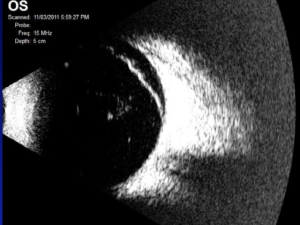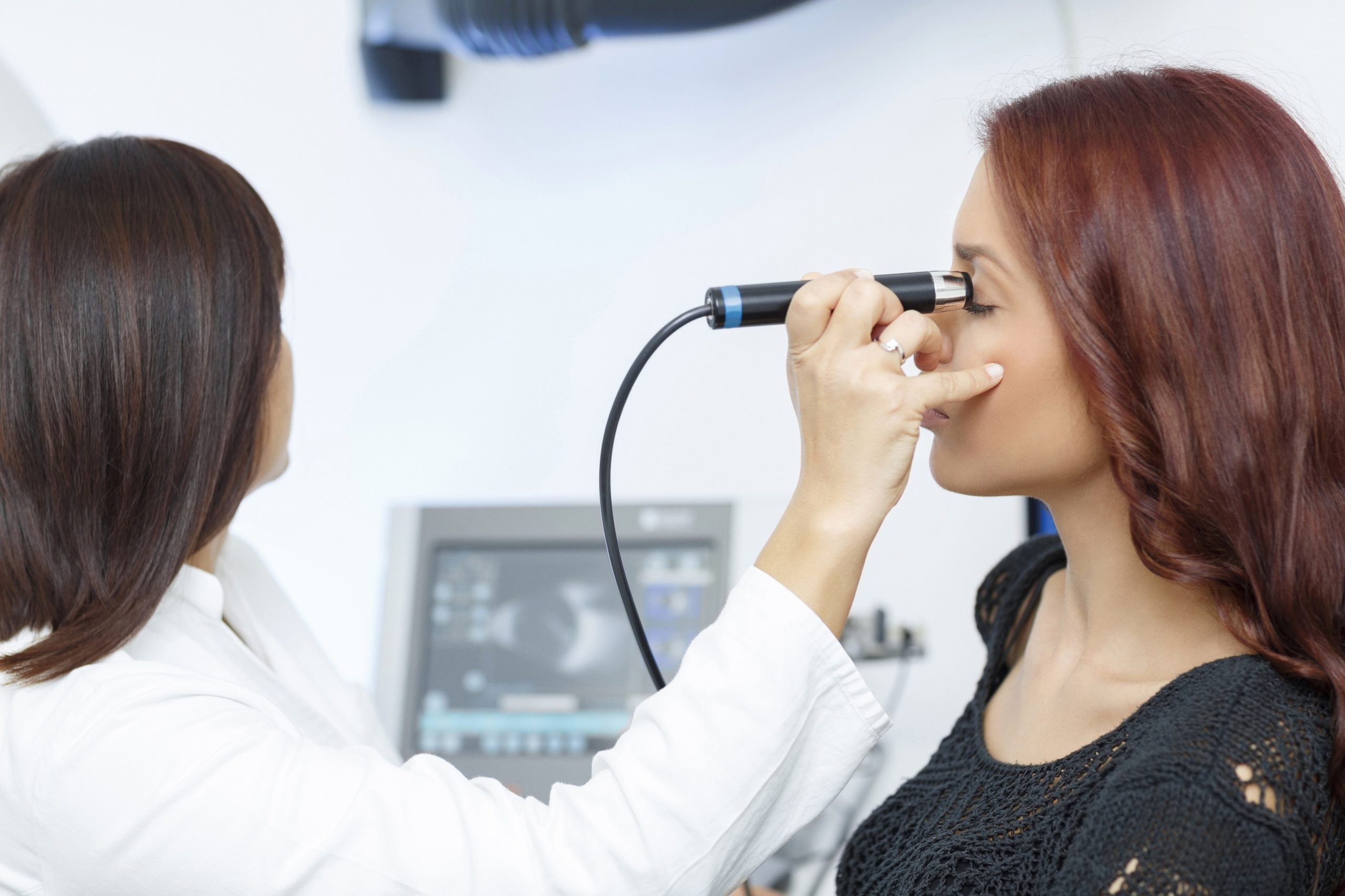It’s safe, more affordable than ever, and useful for numerous indications
If there is one compelling example of the value of ultrasound technology in eye care, it’s an experience I had this past year. I was conducting a retina workshop at the Review of Optometry New Technology and Treatments Conference. To demonstrate how to obtain an ultrasound image, I asked for a volunteer with a pathology or symptom that would warrant a potential B-scan. One doctor raised his hand and said he had noticed a few symptoms of floaters and cobwebs in his left eye that began the previous day. His B-scan image is as follows:

Yes, his diagnosis was a full-blown retinal detachment (RD) with the macula barely on! We were able to contact a local retina specialist, and this doctor underwent a pneumopexy procedure that same day and was able to maintain his functioning vision. So given its power to detect pathology in real-time, why isn’t ultrasound more utilized in primary eye care optometry and ophthalmology practices? [bctt tweet=”Given its power to detect pathology in real-time, why isn’t ultrasound more utilized in primary eye care optometry and ophthalmology practices?” username=”goRendia”]
The benefits of ultrasound
During my preceptorship at Retina Associates of Kentucky, I quickly came to understand the usefulness of ultrasound technology. For example, it would be difficult to differentiate a nevi from an early malignant melanoma without it. Another common indication for ultrasound is a posterior vitreous detachment (PVD).
Ultrasound offers improved visualization of structures obscured by opaque substances, such as dense cataracts. It is also safe and widely accessible.
The American Academy of Ophthalmology (AAO) explains it like this: “Because the eye is a superficial fluid filled structure, ultrasound is an easy to use modality for visualization of ocular pathology and anatomy.” It continues, “The benefits of ultrasound include improved visualization of structures obscured by opaque substances, such as dense cataracts or vitreous hemorrhage.” In patients with dense cataracts, where the fundus is obscured from visualization by slit lamp and laser interferometry (IOL Master), ultrasound can be especially useful and may result in earlier detection of ocular melanoma, says the AAO. Also, the technology is safe, widely accessible, and does not expose the patient to radiation.
Lack of awareness, not cost, may explain limited use
Cost may be one potential reason why ultrasound technology is not more widely used in eye care practices. Ultrasound units were typically $60,000 to $80,000 just a few years ago. But today there are technologies with similar high resolution and all the tools to measure and mark pathology that go for 1/10th of that original cost (e.g. DGH Technology B-scan at < $8,000).
Lack of awareness of its indications, not cost or reimbursement, is the main reason ultrasound is underutilized.
Is poor reimbursement a factor? Not according to my research: the CPT code for a B-scan (76512) is $75 per eye, making it appropriately reimbursed. So that leaves just one reason ultrasound is underutilized: lack of awareness of the indications. Here is a list of potential indications:
- Nevi
- PVD
- Potential RD (flashes/floaters/cobwebs)
- Obstructed view to the retina including opaque corneas, dense cataracts, vitreous hemorrhages or hyphema
- Optic nerve head drusen
- Exophthalmos
- Asteroid hyalosis
- Dislocation of lens
- Globe trauma
- Intraocular foreign bodies
- Any potential intraocular tumor
I also find it helpful in differentiating similar conditions such as:
- Choroidal detachments (serous v. hemorrhagic)
- Differentiating RDs (rhegmatogenous v. exudative)
- Differentiating a retinal tear v. retinal detachment v. retinoschisis
- Differentiating ONH drusen from papilledema
To find out more about using ultrasound in primary eye care, check out OphthalmicEdge.org, which offers free resources and online courses to doctors, such as this course on the history, design, and examination and diagnosis techniques of ultrasound. To stay abreast of the latest ophthalmic technologies, check out my previous posts.


